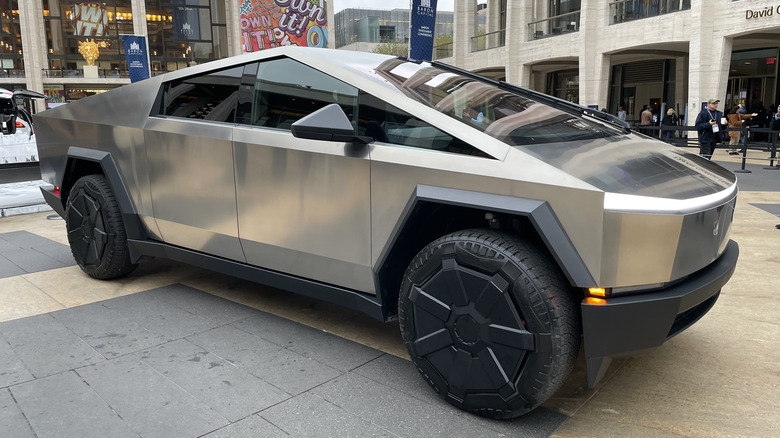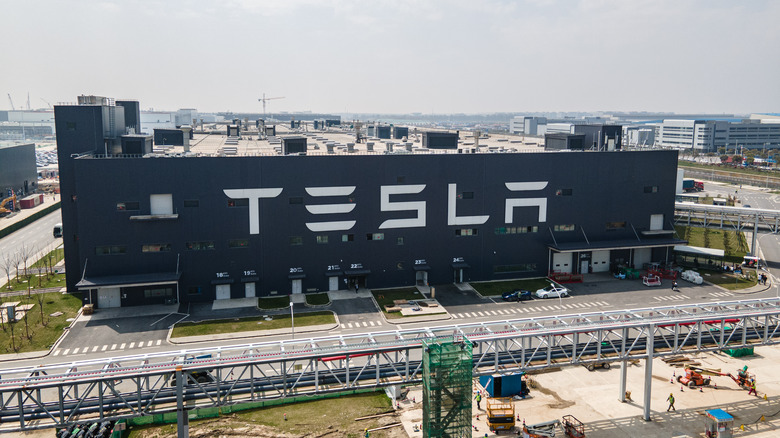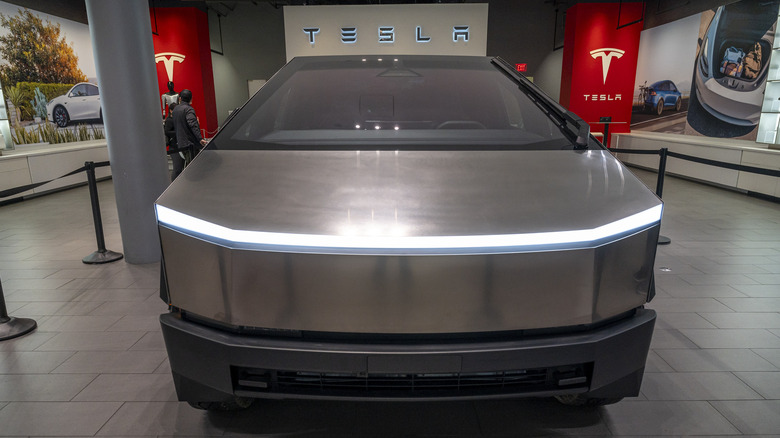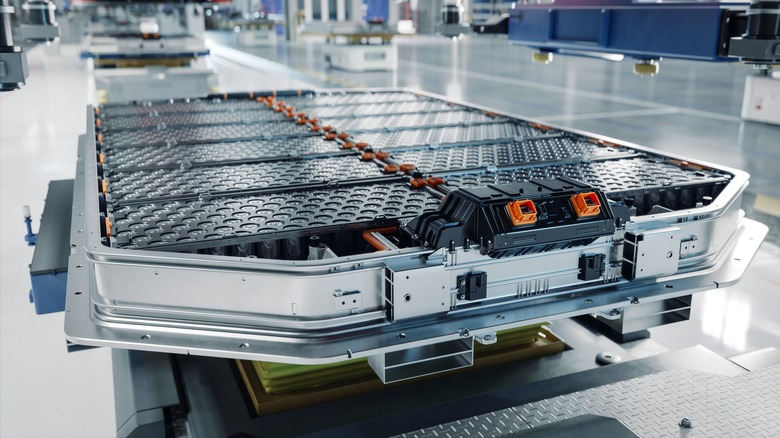Cybertruck May Be In Short Supply, And Battery Woes Could Be To Blame
Tesla's fate is tied to how quickly it can make efficient, cheaper, and easier to produce batteries. It has figured out the innovation part already — thanks to the 4680 battery units — and has money to make those batteries in bulk. But, the company is having difficulty scaling up production, trailing far behind its target estimates. That could significantly push back the shipment of its Cybertruck electric ride.
According to a Reuters report that cites multiple insider sources, the crucial dry-coating process in making the 4680 batteries is proving to be a headache as Tesla struggles with quality validation and scaling up. Tesla is said to make only enough of these batteries to ship roughly 24,000 Cybertruck units each year. The report notes that Tesla has yet to figure out industrial-scale production of these batteries because of issues with the dry-coating process around the battery cathode.
In October, CEO Elon Musk mentioned that the company aims to make approximately 200,000 units of the Cybertruck each year, increasing that number to 250,000 by 2025. Putting 2024 into perspective, the electric carmaker said that the company could put close to 125,000 units on the roads. However, issues with scaling up the production of 4680 batteries have seriously undercut those numbers. Notably, the slow shift from prototype to mass-scale production for the 4680 batteries pushed the Cybertruck's launch in the past.
What's choking Tesla's battery ambitions?
Based on Reuters' estimates, Tesla is currently in shape to produce only 32.5 million units of the 4680 batteries each year at its Austin facility, which is only enough for 24,000 Cybertruck units. That's over ten times lower than the goal Tesla set for itself in 2025 and nearly minuscule considering the almost 2 million registrations for the odd-looking electric truck. But the battery production distress could derail Tesla's plans to offer a cheaper car that sits below the Model 3.
Tesla's employees have expressed hope that dry-coated battery yield will increase once the company's engineers figure out a robust knowledge pipeline that can be quickly executed at other facilities to build newer production lines and scale up the output. But that's easier said than done. Tesla reportedly has plans to get four production lines active to make the 4680 batteries by the end of 2024. But the production problems are very much of the fundamental nature here.
According to the insider sources cited in the report, "Tesla's dry-coating method for cathodes was not proving to be any faster than the old wet process." The report notes that Tesla faces issues combining the battery's constituent materials with the binder before it can be pasted on the metallic foil to make the cathode. The technique works for small numbers, but as Tesla tried to scale up the production, excessive heat emerged as a nagging problem, essentially melting the binder material made of Teflon.
Tesla needs to fix multiple issues in one go
Another problem is with the drying process itself, which requires Tesla to scale up to meet the mass production demands and make custom machinery to handle it. A crucial element of the drying process is the massive rollers that also put pressure on the metallic foil so that it is evenly coated with appropriate material density. However, in trying to do it at a high speed, the yield is plagued with uneven thickness of the coating material, posing quality and longevity hazards.
An insufficient coating also affects a crucial metric called energy density, which refers to the per unit electrical energy output from a small quantified area of the coating. According to a Reuters report, Tesla's team had previously failed to hit the energy density target with its 4680 batteries while working on it at the company's Fremont plan.
At the end of the day, a good dry-coating process results in better batteries that also cost less. Tesla is reportedly hoping to launch its most affordable electric car on batteries produced using the dry-coating technique. But for now, it appears that Tesla needs to figure out the complexities associated with mass production and deliver on its Cybertruck shipment promises before it can dip its toes into other ambitious projects, including cheaper entry-level cars and, of course, the refreshed Roadster sports car.
Why is dry-coating deemed a moonshot for EVs?
A traditional lithium battery is manufactured using a wet coating process, where the cathode is covered with an electrochemically active material by dipping it into a chemical slurry. However, there are multiple problems with this approach. First, during the wet coating process, the subsequent drying stage is energy-hungry, slow, and expensive.
Moreover, the manufacturer needs to constantly recycle the chemical slurry to recover important chemicals and rid it of toxic by-products before a portion of it is dumped. Tesla isn't the only brand, however, that is trying to master the dry-coating pipeline. Volkswagen, Panasonic, LG, Ford, Samsung, and GM are also in the race.
A switch to the dry-coating format presents multiple research-validated advantages. There is no chemical slurry involved. There is no conventional liquid drying process in the equation. The powdered constituents are mixed with a polymeric binder, applied to the metal sheets, and pressed under heavy rollers to get an even coat.
This approach dramatically reduces costs and speeds up the production process while being less taxing on the environment. Since no complex drying machinery is required, the cost and energy demand are significantly lower with the dry-coating process compared to the wet-coating technique.



